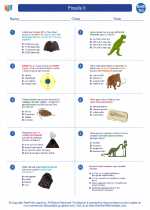Biological Classification System
The biological classification system, also known as the taxonomy, is a hierarchical system used to categorize and organize all living organisms based on their shared characteristics and evolutionary relationships.
Importance of Biological Classification System
The biological classification system is important because it helps scientists and biologists to:
- Organize and categorize the immense diversity of living organisms
- Understand the evolutionary relationships between different species
- Predict the characteristics of organisms based on their classification
- Communicate and share information about organisms in a systematic way
Classification Levels
The biological classification system consists of several hierarchical levels, each representing a different degree of relatedness. These levels include:
Binomial Nomenclature
Each species is given a unique two-part scientific name using a system called binomial nomenclature, developed by Carl Linnaeus. The first part of the name is the genus, and the second part is the species. For example, humans are classified as Homo sapiens.
Study Guide
Here are some key points to focus on when studying the biological classification system:
- Understand the purpose and importance of biological classification
- Memorize the hierarchy of classification levels
- Learn the rules and format of binomial nomenclature
- Practice classifying different organisms into their respective categories
- Explore the evolutionary basis of classification and the concept of phylogenetic trees
By mastering the biological classification system, you will gain a deeper understanding of the diversity of life on Earth and the interconnectedness of all living organisms.



